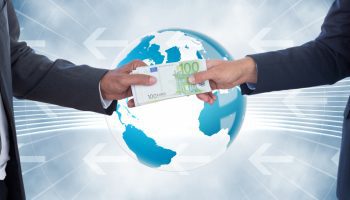Many companies are starting to integrate sustainability into their business strategies. This is a step toward realizing that doing good can improve their bottom line. When it comes to business, sustainability meaning can lead to success or failure.
Economic sustainability is about doing business in a way that doesn’t negatively affect the environment or community. It also means not affecting society. The goal of having a sustainable business strategy is to make a positive impact on people and the environment.
According to GetSmarter, “sustainability is key to ensuring a resilient future for all”. When companies fail to be sustainably responsible, negative reactions such as inequality, environmental degradation, and social injustice can happen. These businesses need to consider various factors such as the environment, social issues, and economic factors when making their business decisions.
What Is Economic Sustainability?
In short, economic sustainability is a business practice that helps to support the long-term growth of a business without having negative impacts on the environmental, social, and cultural aspects of the community.
Myth? Is Economic Sustainability Possible?
Beyond helping manage the environment, sustainable development can also drive business success. Investors use various factors such as an organization’s social and environmental impacts to evaluate its operations.
According to a study conducted by McKinsey, adopting a sustainable mindset can help companies lower their financial risk and improve their public support. The study identified key factors that employees value most when it comes to developing a sustainable mindset.
Ways Businesses Can Develop A Sustainable Business Strategy
Solving the economic sustainability problem falls into the hands of each business. They need to come to terms with how it is important for their future business goals. There are many ways a business can transform its organization into a more sustainable one.
1. Determine Areas Needing Improvement
The first step in driving change is assessing what it means to your team, company, or client. Determine where your company can improve and set some goals to meet. Need help defining your goals? Find goals that are measurable, relevant, specific, achievable, and time-bound.
2. Establish A Mission
Before you can truly define your company’s mission, it’s important to establish clear goals and concrete objectives. A mission statement is an important part of your organization’s strategy. It should articulate your company’s values and goals, and it should serve as a guiding light for how you do what you do. A mission statement should help a company evolve with the market, not hinder it. It should also help define the organization’s objectives.
3. Create A Strategy
Creating a sustainable business strategy can help keep your company profitable. It’s also a vital step to ensure your organization stays on track. The triple bottom line is a framework that shows how a company’s actions affect its bottom line. Making a small change can lead to big changes. For instance, sending emails instead of printing newsletters can save money, time, and the environment.
4. Implement Strategy And Assess Results
Economic sustainability is not just about being motivated to do good, it’s also about improving one’s performance. This step can be done by committing to measurable goals and achieving them. Periodically revisit your processes to make sure your mission, objectives, and progress remain on track.
When goals become a purpose, establishing a powerful story will help you create an actionable plan. This will help you set goals and drive results. Any business can find ways to become more economically sustainable by creating a plan to follow within the organization.
Read Also:




























